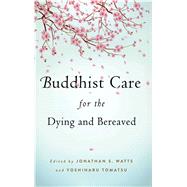
| Introduction | p. 1 |
| JAPAN: Challenges of Caring for the Aging and Dying | p. 19 |
| JAPAN: Tear Down the Wall: Bridging the Premortem and Postmortem Worlds in Medical and Spiritual Care | p. 37 |
| JAPAN: ôTrue Regardö: Shifting to the Patient's Standpoint of Suffering in a Buddhist Hospital | p. 57 |
| JAPAN: The Vihara Movement: Buddhist Chaplaincy and Social Welfare | p. 75 |
| USA/JAPAN: One Dies as One Lives: The Importance of Developing Pastoral Care Services and Religious Education | p. 95 |
| TAIWAN: The Development of Indigenous Hospice Care and Clinical Buddhism | p. 111 |
| THAILAND: The Seven Factors of a Peaceful Death: A Theravada Buddhist Approach to Dying | p. 131 |
| CAMBODIA: Actualizing Understanding: Compassion, AIDS, Death, and Dying among the Poor | p. 149 |
| UNITED KINGDOM: The Birth of a New Culture of Active Dying: The Role of Buddhism in Practices and Attitudes Toward Death | p. 169 |
| GERMANY: Buddhist Influences on the Scientific, Medical, and Spiritual Cultures of Caring for the Dying | p. 189 |
| USA: Being with Dying: The Upaya Institute Contemplative End-of-Life Training Program | p. 209 |
| USA: Zen Approaches to Terminal Care and Buddhist Chaplaincy Training | p. 229 |
| USA: "Listening to the Dharma": Integrating Buddhism into a Multifaith Health Care Environment | p. 249 |
| Notes | p. 271 |
| Bibliography | p. 279 |
| Index | p. 285 |
| About the Authors | p. 301 |
| Table of Contents provided by Ingram. All Rights Reserved. |
The New copy of this book will include any supplemental materials advertised. Please check the title of the book to determine if it should include any access cards, study guides, lab manuals, CDs, etc.
The Used, Rental and eBook copies of this book are not guaranteed to include any supplemental materials. Typically, only the book itself is included. This is true even if the title states it includes any access cards, study guides, lab manuals, CDs, etc.